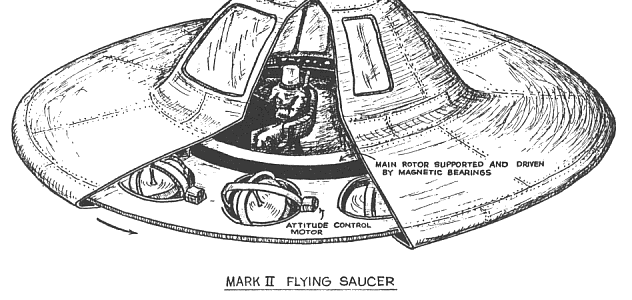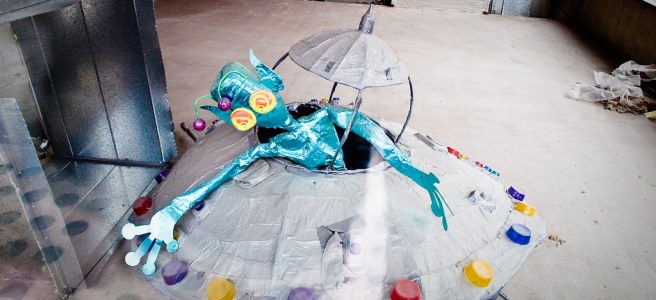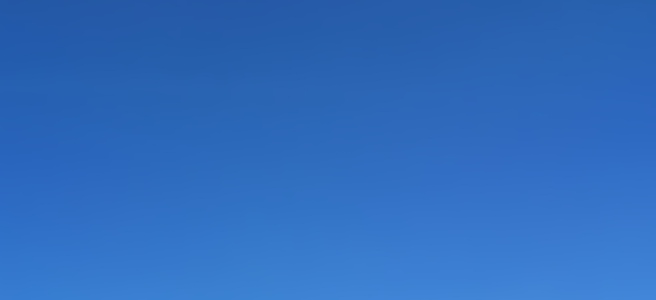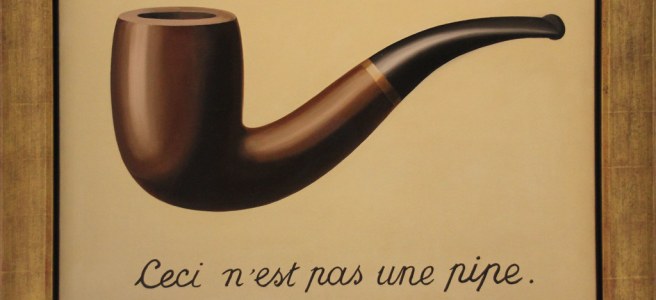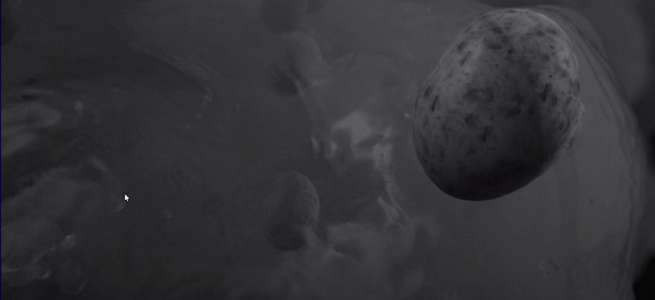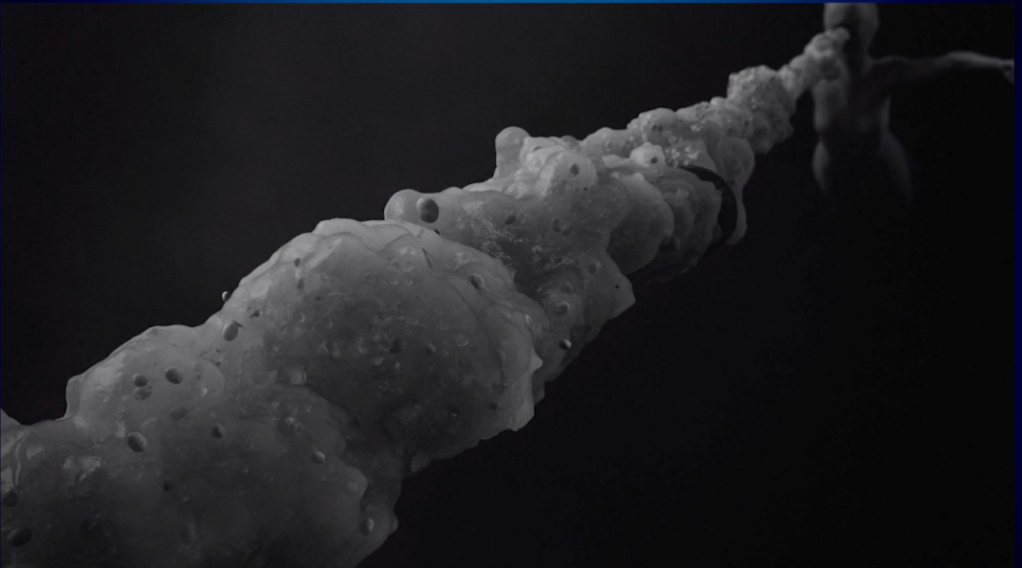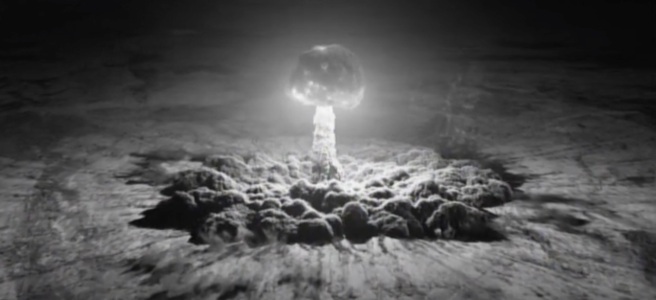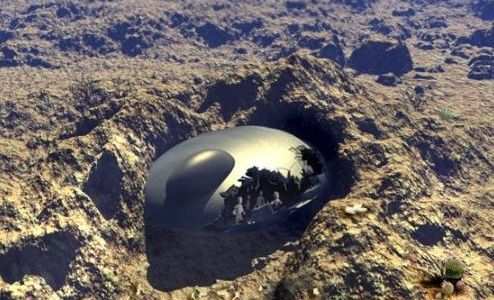On finishing Vallée’s and Harris’ Trinity, the reader would be forgiven if they wondered if the “Jacques Vallée” who co-authored this book were the same “Jacques Vallée” credited with writing Revelations or the recently re-issued Passport to Magonia. Where the last volume is, at least in certain circles, highly-prized for being inventive and groundbreaking and Revelations is a focussed, critical examination of the stories about alien abduction, crashed flying saucers and dead aliens, secret alien bases and cattle mutilation, Trinity is an unfocussed, raggedly-composed, eye-rollingly credulous mess of a book.
It would be a tedious exercise to catalogue its manifold failings. While Vallée speaks of himself as a scientist and even imagines scientists reading the book (286), Trinity is no work of science, scholarship, or even investigative journalism. Indeed, it reads like a first draft, in sore need of a thorough editing for content and structure, let alone a proof-reading. The main body of the book is composed of transcripts of interviews conducted by Harris (silently edited by Vallée “for clarity” (16)) with the three witnesses to a “UFO crash” avant le lettre and subsequent matters: Jose Padilla; Jose’s friend, Remigio Baca; and Sabrina Padilla, Jose’s niece. These interviews are interspersed by commentaries by Vallée to highlight their salient points and interlarded with chapters, often mystifyingly digressive, about matters historical and ufological: the development and deployment of the atomic bomb, the history of the American Southwest, the Socorro and Valensole landings, etc. Although the book contains footnotes, endnotes, a bibliography, and index, this scholarly apparatus is erratic and brow-furrowing. It’s too often unclear why well-known figures, such as Robert Oppenheimer, require an endnote and how the data related is pertinent to the book’s argument. Factual claims essential to the case that Vallée and Harris want to make far more often than not are left unsupported, rendering much of the book so much hearsay. An added insult are the typos that pepper the text. Important place names can’t even be spelled consistently: The Plains of San Augustin are the “Plains of San Agustin” (299) in the footnote explaining the location, the San Antonio crash site is as often “San Antonito”—even in the title of the book’s second chapter—, and Ryan Wood’s book Majic Eyes Only (134) becomes Magic Eyes Only on the facing page.
Flaws in organization, scholarly apparatus, and orthography could be forgiven if the book’s content were so earth-shatteringly urgent its hasty composition and issue were justified by the need to make its matter known. But rumours of the crash the book investigates at length if not in depth are hardly new to ufological ears: among others, Timothy Good, “a careful chronicler of modern ufology” (15), remarks the story in his 2007 book Need to Know. The case the authors want to make for the veracity if not significance of the event is buried under page after page of leisurely digressions (as noted above) and undermined by their credulity. Among too many examples, one can point to the seemingly uncritical acceptance of the testimony of Philip Corso (of which Vallée has been critical in the past) and the apparent belief in the authenticity of the Wilson / Davis document (that John Greenewald has explained in far more down-to-earth and persuasive terms).
Were Trinity: The Best-Kept Secret a serious work, it might have begun with a brief introduction as to how the case in question caught the attention of the authors and why they thought it worth their and the reader’s time to investigate (i.e., the book’s eleven-page foreword would be reduced to a few sentences). A survey of the literature might have been followed by a clear, focussed description and narration of the case, rigorously supported by citations to the research that substantiates it, with references where applicable to the complete, unedited transcripts, perhaps contained in an appendix. (The work of Kevin Randle and Joshua Cutchin are exemplary in this regard). An analysis and conclusion would have ended the book. Had Trinity been so researched and organized, and written with a sharp focus and scientific / scholarly objectivity, then we’d have a book that could claim more serious attention.
So, if Trinity: The Best-Kept Secret really can’t be counted as a scientific, scholarly, or journalistic work, to what genre does it belong? The answer is that it is a work of ufology. As unsurprising as such a categorization is, it implies more than, say, Neil deGrasse Tyson might imagine. The genre cuts a wide swath, from contactee George Adamski‘s Flying Saucers Have Landed to the more serious attempts at scientific ufology of Harley D. Rutledge and Peter A. Sturrock. It is possible, however, as I have argued at length here at the Skunkworks, to bracket the truth-claims of ufological media (and it is clearly a multimedia, cultural phenomenon) and study it as a kind of folklore or mythology-in-the-making, what Jung called “a visionary rumour”.
From this point of view Trinity is singular, for it is, to my knowledge, the first work of ufology to grasp, in however a tentative, repressed (unconscious) manner, this folkloric, textual dimension. In Chapter Twelve, “A Trinity of Secrets”, Vallée perceives a numerical, if not numerological, pattern:
Everything, in this story, appears to be going in threes…Three atomic bombs were exploded in the summer of 1945…There were three live Campamochas aboard the crashed craft…there were three ‘short ugly guys’ who ‘started to put things into the mind‘ of the sheepherder…Also, at least three metallic artifacts were recovered… (149)
Vallée also remarks the “three objects of interest”: Fat Man (the atomic bomb detonated over Nagasaki), the “avocado” UFO observed by the witnesses, and the Jumbo test enclosure on display at the Trinity site (150), to which one could add the number of direct and indirect witnesses and the three peaks that give the Trinity site its name and the book its title. Further, he collates an additional trio, comparing the San Antonio crash with the Socorro and Valensole landing cases (pp. 183 ff.). Vallée notices, too, that “the Aurora object [an airship said to have crashed in Aurora, Texas in 1897], like the oval craft seen by Padilla and Baca, hit a tower before it went crashing to the ground: two similar accidents, half a century apart…” (117). Often, Vallée refers to himself as an information scientist, interested in finding patterns in the data, signal in the noise. Philosophers would speak here of the play of identity and difference, literary and music critics of theme and variation, folklorists of motifs, and semioticians of the repetitions that constitute signs.
Vallée is clearly struck by the spatiotemporal proximity of the Trinity atom bomb test and the San Antonio crash and retrieval: the coincidence is significant, meaningful if not, strictly, synchronicitous. Indeed, in the conclusion, he grasps (at) the hermeneutic rather than the physical, scientific meaning of the event he and Harris have investigated: “Jose and Reme were witnesses to an unexpected dialogue of sorts, an eerie exchange of symbols between the brightest scientists in the world and something else, undoubtedly the product of another mind…” [my emphasis] (282). Reflecting on the stories of UFO crashes and retrievals, in part or in whole, he reflects
What if those UFO devices had been designed so they could not be reverse-engineered by people with our current level of knowledge and social development? What if their target was at a different level? At a symbolic level, about our relationship to life? At a psychic level, about our relationship to the universe? What if they contained an existential warning? [my emphasis]( 287)
He even attempts to divine the meaning of the event, interpreting it as “a signal, from the point of view of better scientists somewhere, that our survival may not be an inflexible requirement of the universe?” (288).
It’s as if Vallée “knows not what he writes”, his focus on investigating and explaining a physical event interferes with his understanding its symbolic cache, however much he does grasp the event possesses one. The thinker who first coined the expression ‘nihilism’ in the Eighteenth Century, Friedrich Jacobi, used it to refer to the implications of the worldview of Spinoza and the then-burgeoning natural sciences: a self-enclosed cosmos of cause-and-effect was without meaning; the sciences can describe and explain how the world is, but cannot account for the fact that it is. This nihilism, the natural sciences’ overlooking or bypassing the question of the meaning of what they study, blocks Vallée from being able to move into a purely semiotic, hermeneutic analysis of the matter. The crash can only be a signal, a communication of sorts, because the sciences can grasp language only in its communicative, informational function, not, ironically, in its mythopoetic, “symbolic” dimension. Events like that under investigation in his and Harris’ book do indeed bear witness to an “an unexpected dialogue of sorts, an eerie exchange of symbols“, between the witnesses and researchers and “another mind”, just not a nonhuman, extraterrestrial, ultratraterrestrial, interdimensional, or transtemporal mind, but that of the inhuman Other (following Lacan), the Unconscious, Creative, Collective, or otherwise.
As we have argued at length from the start, the “myth of things seen in the sky” can be grasped precisely as a spontaneously-generated, anonymous folklore that operates at “a symbolic level, about our relationship to life.” As a mythology or folklore, it operates in a semantic space that is both and neither true and false. That is, the countless stories about UFOs and their occupants, both direct (e.g, a sighting report) and indirect (e.g., the speculations Vallée himself indulges around the Wilson / Davis document (pp. 280 ff.)) are taken for fact by some and as a curious fiction by others. Vallée attempts to grasp the meaning of a physical event and finds himself caught between the Scylla of the fictive and the Charybdis of fact, unwilling or unable to be lifted by the former because of his investment in the latter.
As I remarked in my first, brief reflection on the announcement and eventual publication of Vallée’s and Harris’ book, in an interview with the authors, Jimmy Church’s stated belief, that the San Antonio crash “could be another Roswell”, is likely prophetic, not in foretelling the future (though that, too), but in its seeing into the truth of the matter. Trinity: The Best-Kept Secret, especially because of its failings, all the work it leaves to be done, might well spawn another shelf in the UFO crash retrieval library, like Stanton Friedman’s initial research did for the Roswell crash. And, as such, Trinity will take its place between the covert fictions of George Adamski (whose Venusians came to warn us of the dangers of atomic energy) and the overt fiction of David Lynch’s Twin Peaks, which ties the Trinity test to analogous and no less grave or eerily symbolic developments.

